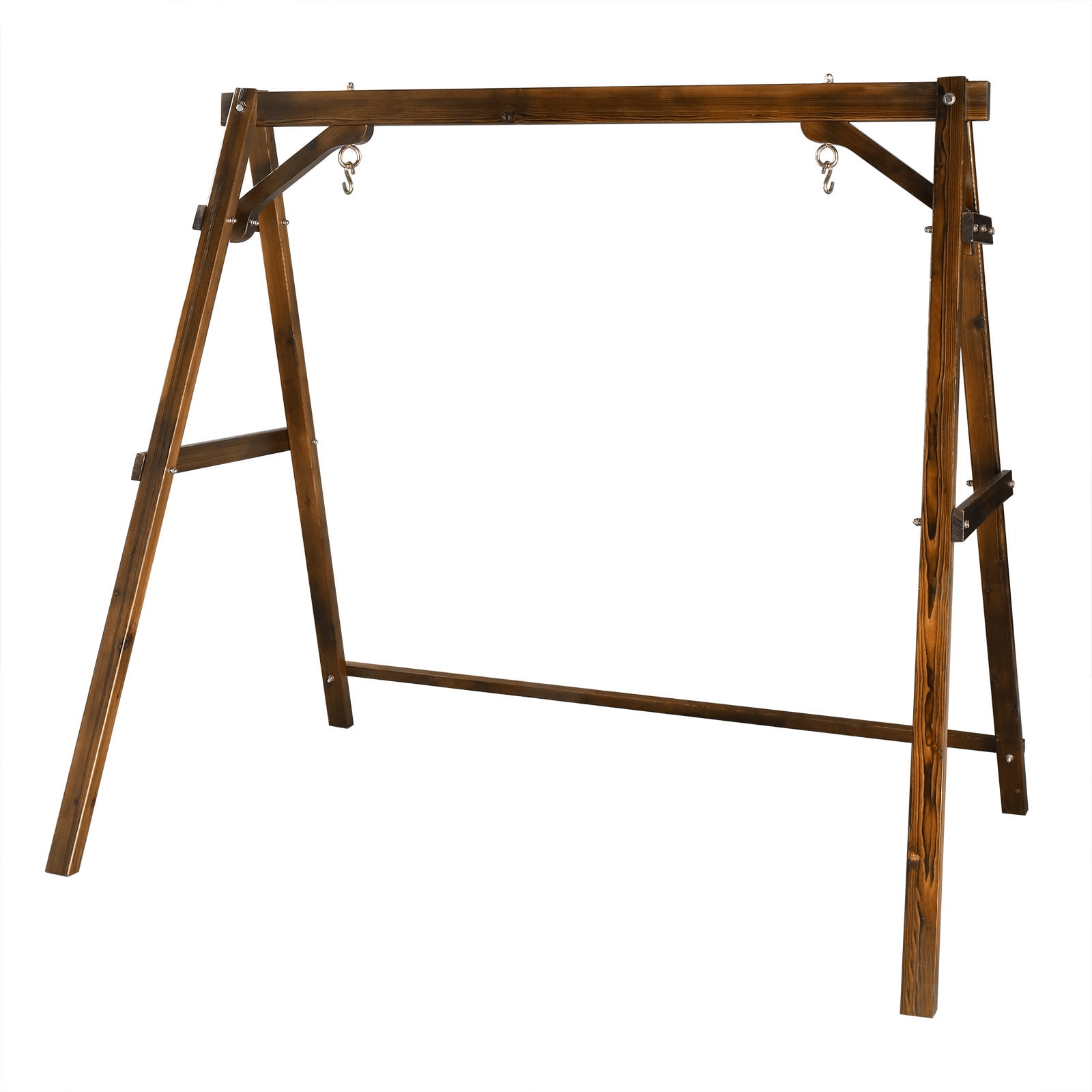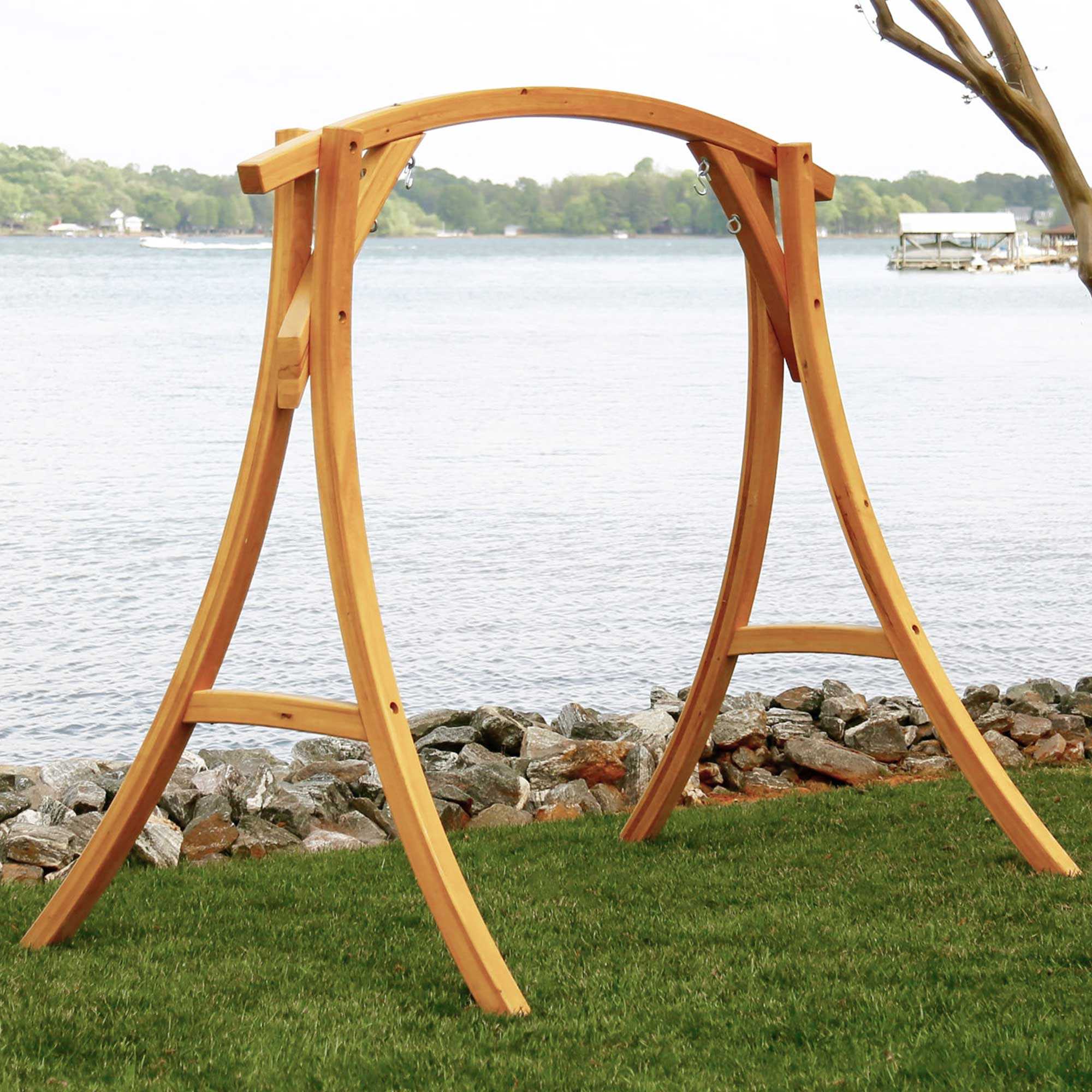Construction and Materials

A sturdy and safe wooden chair swing requires careful planning and construction. Understanding the different aspects of construction, materials, and hardware is essential to ensure its longevity and safety.
Construction Methods
The construction methods for wooden chair swings involve several steps, each crucial for the swing’s stability and durability.
- Frame Construction: The frame, usually made of sturdy lumber, forms the base of the swing. The frame’s strength and stability depend on the quality of wood and the construction method. Common techniques include mortise and tenon joints, which offer strength and durability, and butt joints, which are simpler but require additional reinforcement.
- Chair Seat and Backrest: The chair seat and backrest are typically constructed using slats or a solid piece of wood, depending on the design. These components should be comfortable and securely attached to the frame.
- Suspension System: The suspension system, which connects the chair to the swing stand, is crucial for the swing’s movement and safety. This typically involves chains, ropes, or a combination of both. The suspension system should be robust and adjustable to accommodate different user weights and preferences.
Types of Wood
The choice of wood for a wooden chair swing is critical as it affects the swing’s durability, weight, and aesthetics.
- Hardwoods: Hardwoods, such as oak, maple, and cedar, are known for their strength, durability, and resistance to rot. These woods are suitable for outdoor use and can withstand the elements. Oak, for instance, is known for its strength and durability, while cedar is resistant to rot and insects, making it an excellent choice for outdoor furniture.
- Softwoods: Softwoods, like pine and fir, are lighter and easier to work with. However, they are less durable than hardwoods and may require more maintenance. Pine, for example, is relatively inexpensive and easy to work with, but it is prone to warping and damage. Fir, on the other hand, is more resistant to warping but is still not as durable as hardwoods.
- Treated Wood: Treated wood, such as pressure-treated lumber, is specifically designed for outdoor use. It is resistant to rot, decay, and insect infestations. However, it may contain chemicals that could be harmful to the environment or humans, so it’s important to choose a reputable brand and follow the manufacturer’s guidelines for safe handling.
Hardware and Fasteners
Hardware and fasteners play a crucial role in ensuring the safety and longevity of a wooden chair swing.
- Screws: Screws are essential for assembling the swing and securing its components. Choosing the right size and type of screws is important for a secure and durable connection. For instance, using stainless steel screws is recommended for outdoor applications as they are resistant to corrosion.
- Bolts: Bolts, particularly carriage bolts, are often used for connecting the swing frame to the stand or for attaching the suspension system. Carriage bolts are designed for strength and durability, making them ideal for this purpose.
- Nuts: Nuts are used in conjunction with bolts to secure the components together. They should be chosen to match the size and type of bolts used.
- Washers: Washers are placed under nuts and bolts to distribute the load and prevent damage to the wood. They can also help prevent the nut from loosening over time.
- Chain or Rope: The chain or rope used for suspension should be strong and durable, capable of supporting the weight of the swing and its users. Consider using galvanized chains or ropes specifically designed for outdoor use.
Installation and Maintenance: Wooden Chair Swing Stand

Installing and maintaining a wooden chair swing is a rewarding process that allows you to enjoy its benefits for years to come. This section provides detailed instructions and tips to ensure a safe and enjoyable experience.
Choosing the Right Location
Selecting the ideal location for your swing is crucial for both its functionality and safety.
- Consider the Swing’s Size and Weight Capacity: Choose a location that can accommodate the swing’s dimensions and the weight it’s designed to hold.
- Assess the Stability of the Mounting Surface: Ensure the surface you choose can withstand the swing’s weight and movement. A sturdy beam, a strong tree branch, or a dedicated swing set frame are ideal options.
- Evaluate the Swing’s Clearance: Ensure adequate clearance around the swing for safe movement and prevent any potential collisions.
- Think about Shade and Sunlight: Choose a location that offers shade during hot days and allows for some sunlight exposure for drying after rain.
Preparing the Mounting Surface
Before installing the swing, you need to properly prepare the mounting surface to ensure a secure and long-lasting installation.
- Clean the Surface: Thoroughly clean the mounting surface to remove any dirt, debris, or loose material.
- Inspect for Weak Spots: Carefully examine the surface for any signs of rot, decay, or structural weakness. Address these issues before proceeding with the installation.
- Reinforce if Necessary: If the mounting surface is weak or needs additional support, consider reinforcing it with metal brackets, additional beams, or other appropriate structural reinforcements.
Securing the Swing Safely
Securing the swing properly is essential for safety and to prevent accidents.
- Use the Right Hardware: Use heavy-duty, weather-resistant bolts, screws, and other hardware specifically designed for outdoor use.
- Follow Manufacturer Instructions: Always refer to the swing’s manufacturer’s instructions for specific installation details and recommended hardware.
- Double-Check Tightness: After installation, double-check the tightness of all bolts, screws, and other fasteners to ensure a secure connection.
Regular Cleaning
Regular cleaning is essential for maintaining the appearance and longevity of your wooden chair swing.
- Remove Dust and Debris: Use a soft brush or cloth to remove dust, dirt, and debris from the swing’s surface.
- Wash with Mild Soap: For deeper cleaning, use a mild soap solution and a soft sponge or cloth. Avoid harsh chemicals that can damage the wood.
- Rinse Thoroughly: After cleaning, rinse the swing thoroughly with water to remove any soap residue.
Applying Protective Finishes, Wooden chair swing stand
Applying protective finishes helps to protect the wood from the elements and maintain its beauty.
- Choose the Right Finish: Select a finish specifically designed for outdoor use, such as a weather-resistant sealant, stain, or paint.
- Follow Manufacturer Instructions: Follow the manufacturer’s instructions for applying the finish, including the number of coats, drying time, and any special considerations.
- Reapply as Needed: Reapply the finish as needed, based on the manufacturer’s recommendations and the wear and tear on the swing.
Addressing Minor Repairs
Minor repairs can help to extend the life of your wooden chair swing.
- Tighten Loose Fasteners: Regularly check for loose bolts, screws, or other fasteners and tighten them as needed.
- Repair Small Cracks: Use wood filler to repair small cracks or splits in the wood.
- Replace Damaged Parts: If any parts are damaged beyond repair, replace them with new, compatible parts.
Safety Inspections
Regular safety inspections are crucial for ensuring the safe use of your wooden chair swing.
- Check for Loose or Damaged Parts: Inspect the swing for any loose or damaged parts, including the frame, chains, ropes, and hardware.
- Examine the Mounting Surface: Check the mounting surface for any signs of wear, tear, or structural weakness.
- Test the Swing’s Stability: Gently rock the swing to ensure it is stable and securely attached to the mounting surface.
A wooden chair swing stand is a delightful addition to any porch or patio, offering a relaxing spot to sway and enjoy the outdoors. However, if your chair has casters, you might encounter the common problem of them falling out.
This can be quite frustrating, especially when you’re trying to enjoy a peaceful moment. Luckily, there are solutions to this pesky issue, which you can find by reading this article about casters keep falling out of wooden chairs.
Once you’ve addressed the caster woes, you can return to your swing stand with a renewed sense of tranquility.
While a wooden chair swing stand evokes images of leisurely afternoons and gentle swaying, for a more sophisticated touch, consider the sabanc solid wood button tufted side chair. This chair’s elegant design and luxurious upholstery would add a touch of refined whimsy to any space, even if it’s not actually swinging.
After all, sometimes a touch of class is all you need to elevate your relaxation game.
